Inside a Volcano: Lava Tube and Chimney (September 2009)Azores volcanoes offer many examples of lava tubes. Algar do Carvao on Terceira Island (first row of photos) offers the unique opportunity to enter a hundred meters deep into the chimney of a cinder cone which was active between 100 BC and 300 AD. During the eruption, the magma found an exit at the base of the cone. With a few minutes only highly fluid lava left vacated the vent within the cone. Today it can be visited down to the magma level of the lower vent. Gruta das Torres on Pico Island is the best preserved lava tube in the Azores. It is about 5 km long. Discovered in 1990, it contains spectacular lava stalactites and shiny pahoehoe flows, erupted about one thousand year ago. |
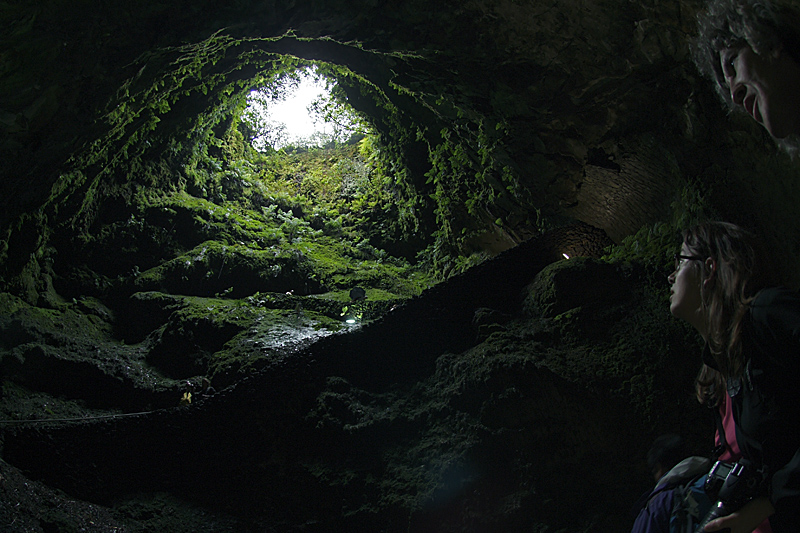 Algar do Carvao: Remarkable view of the vent within the cinder cone which rises to about 100m above our heads (top right: Roby!) | 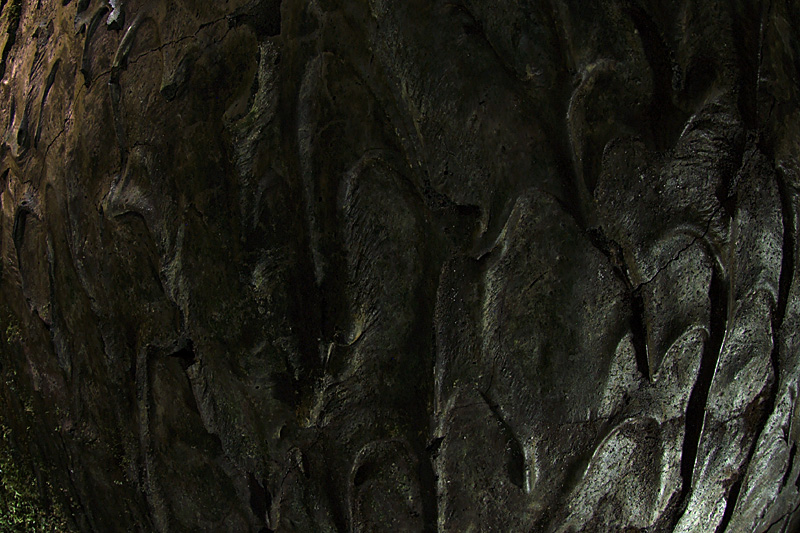 When lava quickly drained the magma conduit, some remained sticking to the conduit walls and dripped, causing wave-like features. | 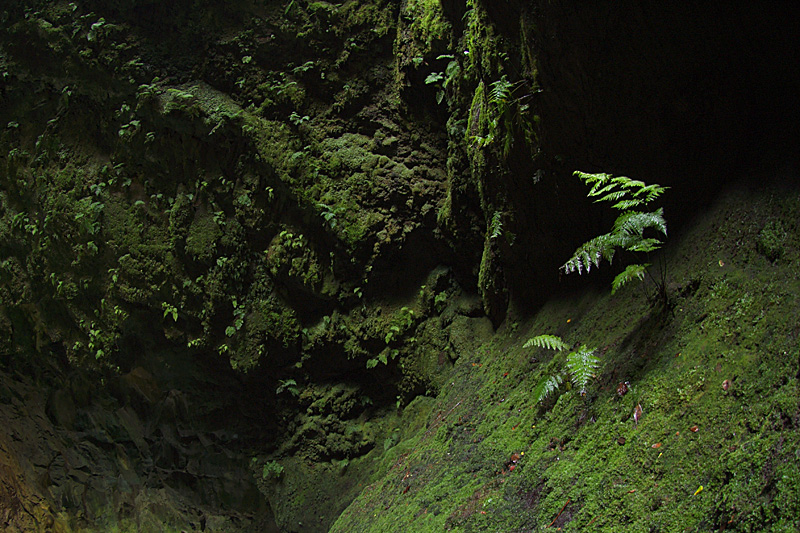 Rainwater enters through the open vent, allowing ferns to grow abundantly along the counduit's walls. | 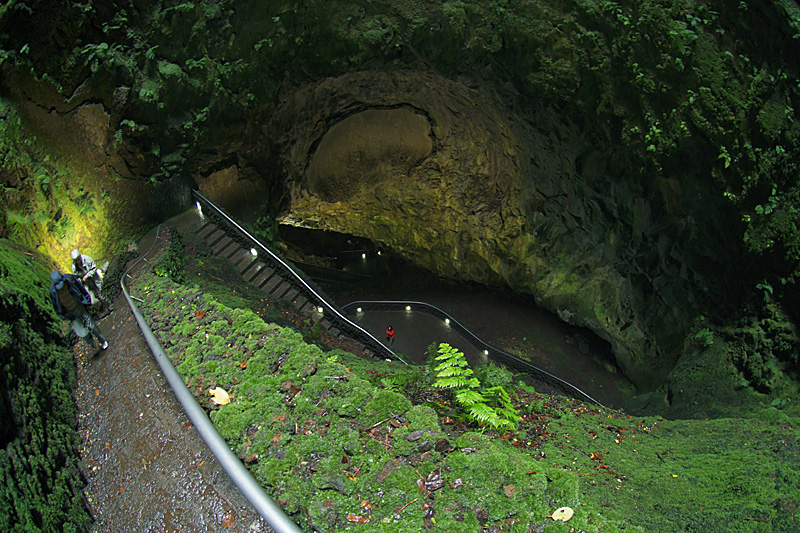 View of the floor of the volcano chimney: after most lava drained out some flowed to the new vent on the far right. |
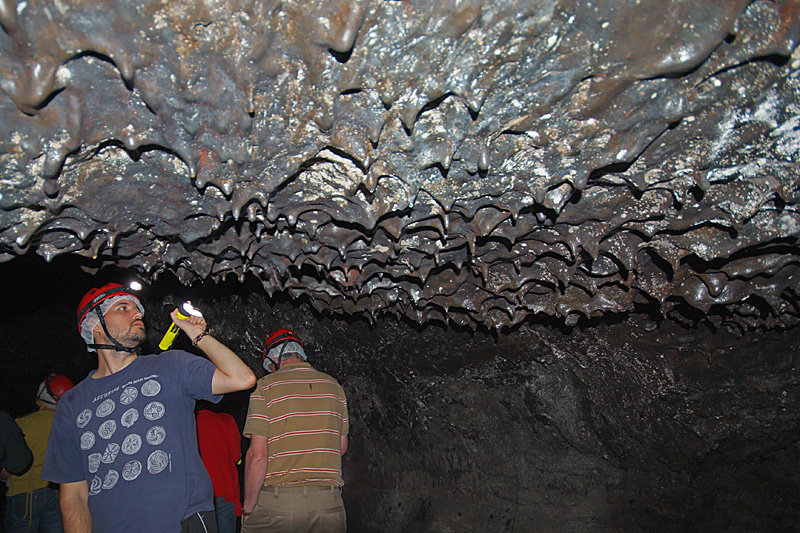 Gruta das Torres: When the lava level dropped, lava dripped in stalactites from the tube's ceiling. | 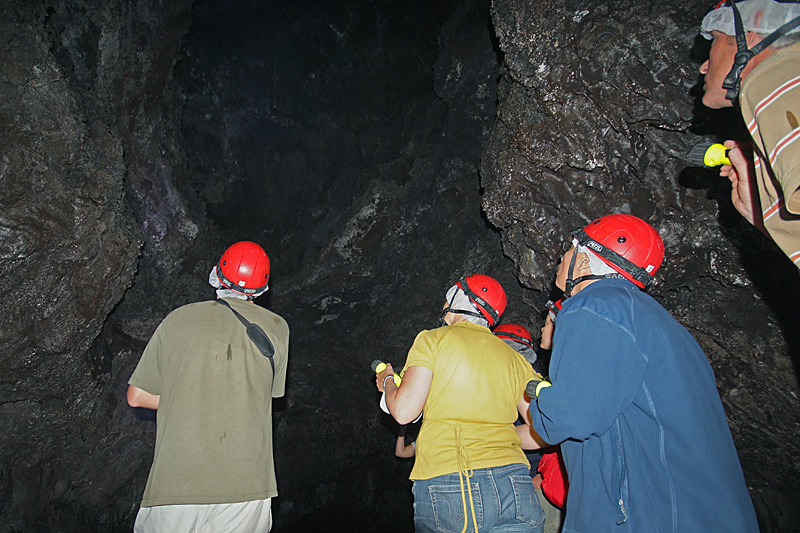 Confluence of an upper lava tube with the one we are exploring through a window in the tube ceiling. | 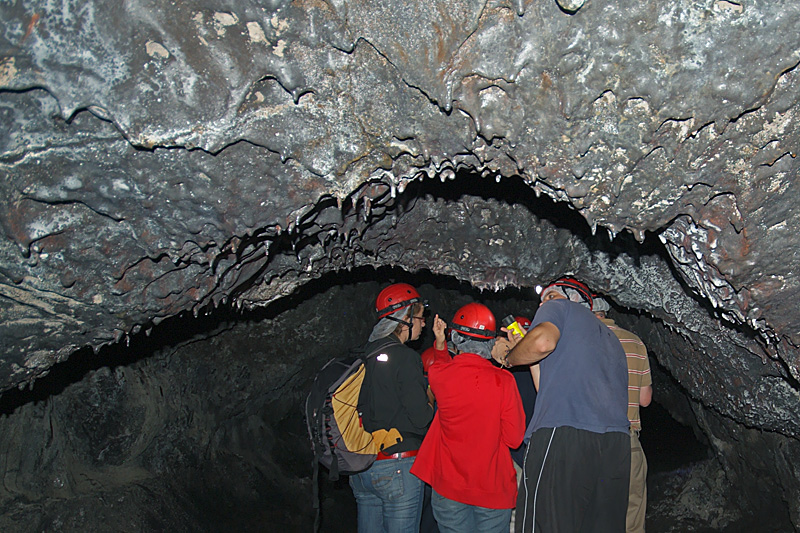 The tube is as much as 15 metres high. However in some places the ceiling is much lower than 2 metres… | 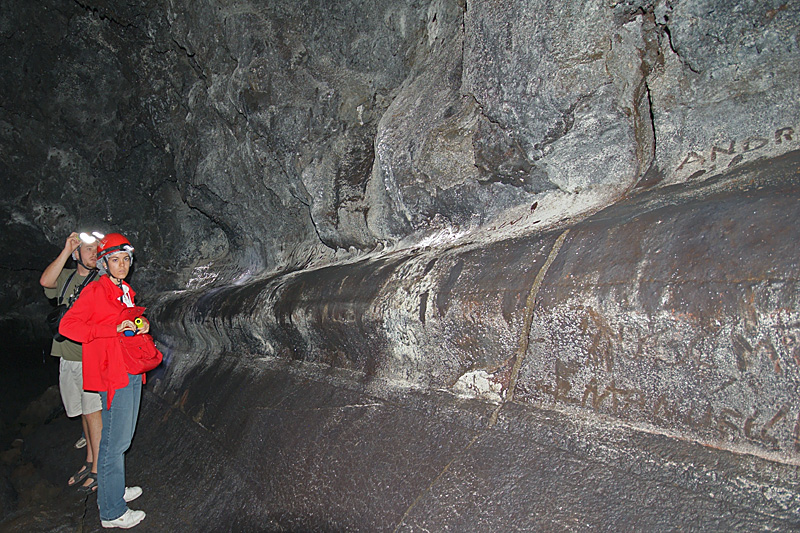 Banks of the sustained lava flow on the middle level. After feeding had stopped most lava drained suddenly. |
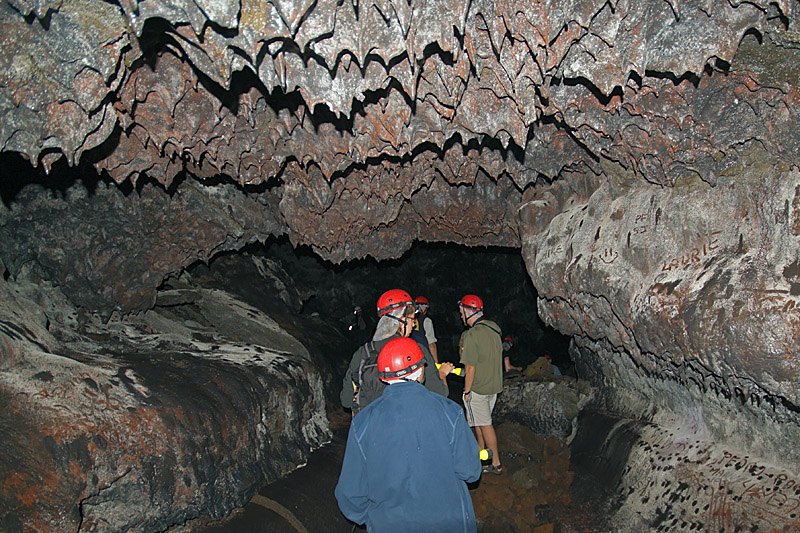 Tourists have written their names on layers of white bacteria growing on the flow banks on both sides of the tube. | 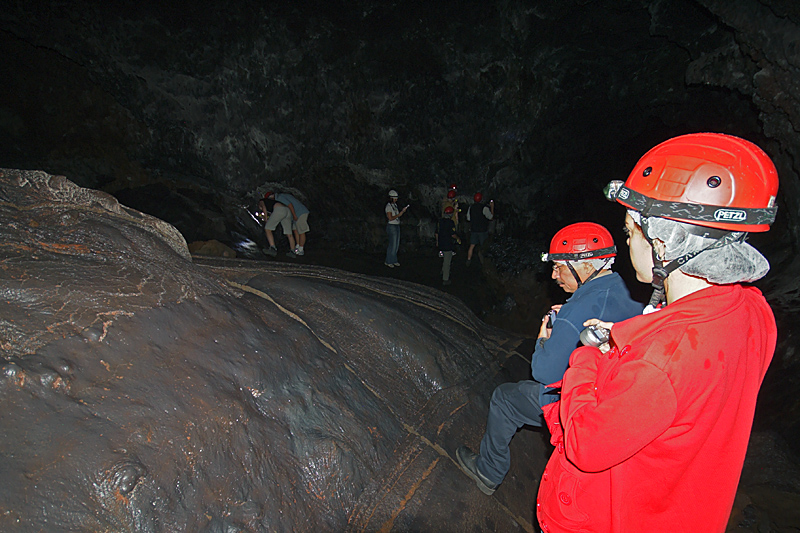 The flowing lava was so highly fluid that it could cover these domes with an extremely shiny surface. | 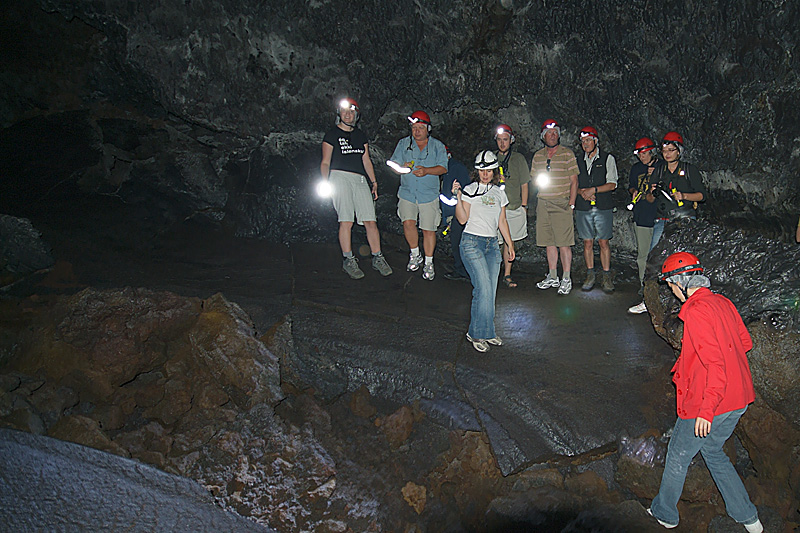 Our group is standing on the surface of a shiny pahoehoe flow at bottom of the tube. | 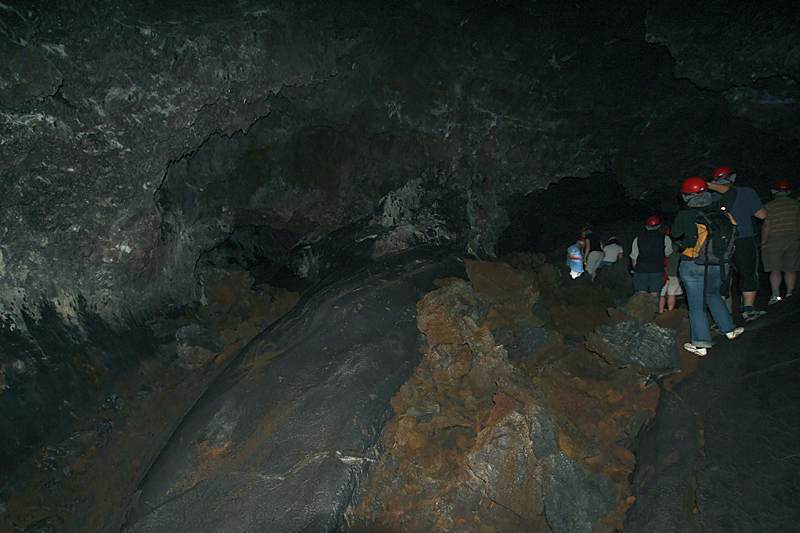 Confluence of two flows, one from the tube at center, the other from the tube we are entering. |
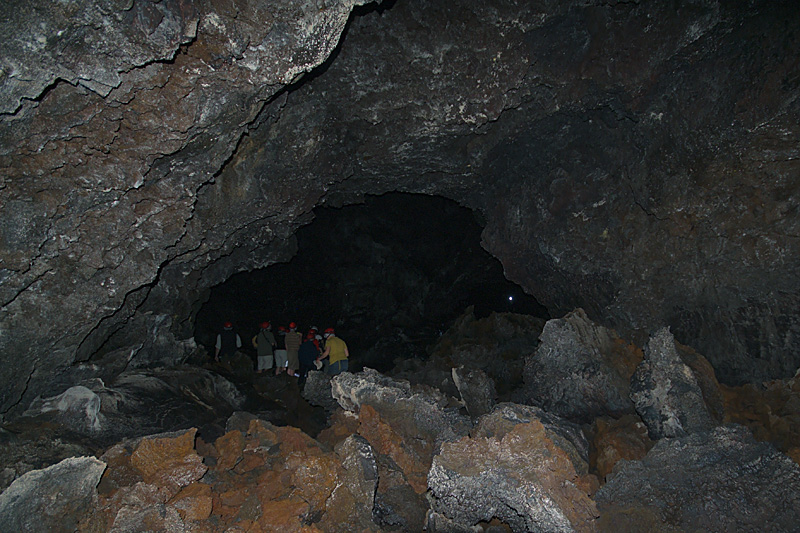 In many places the ceiling collapsed and covered the already solidified flow with many large basalt blocks. | 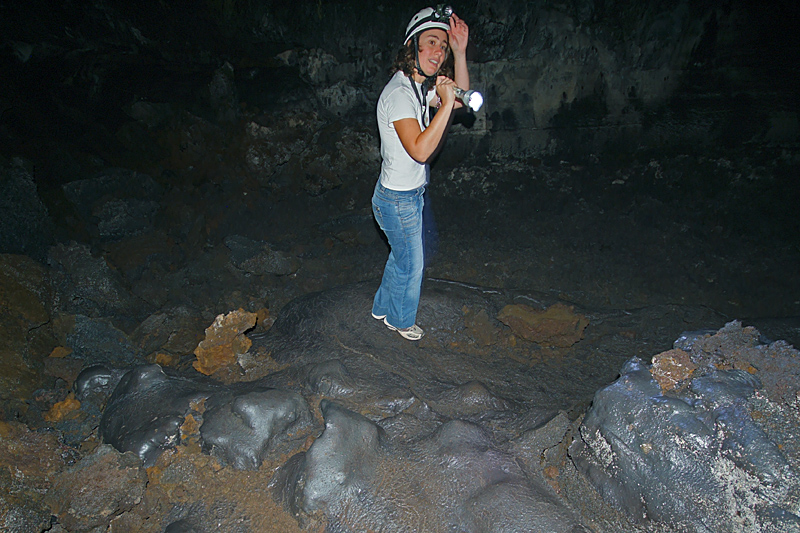 Sometimes thin pahoehoe flows cover blocks from collapses which happened just before the eruption ended. | 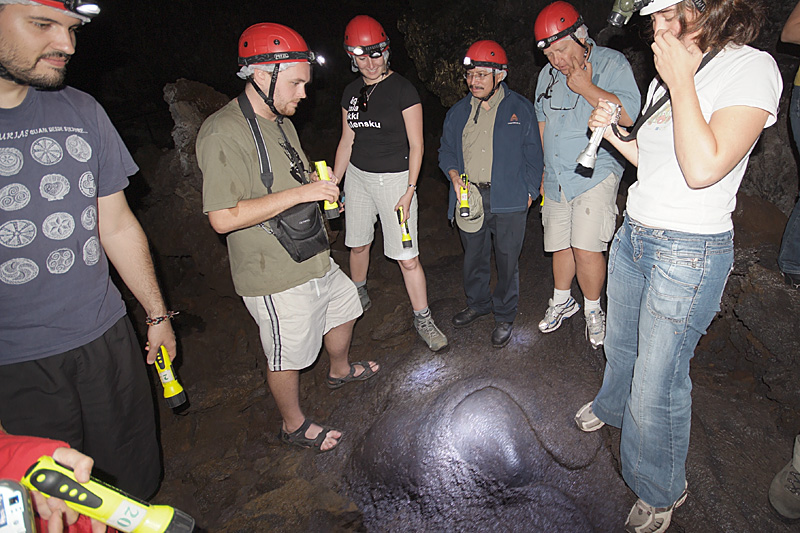 Our group stands around the last, very thin (a few centimeters only) pahoehoe flow erupted at the end of the eruption. | 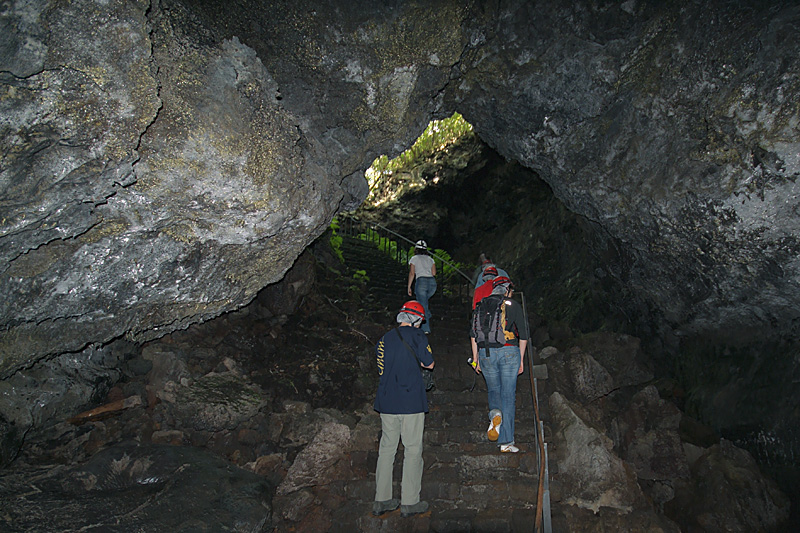 We exit Gruta das Torres through one of the many tube skylights. |
| Photos by Marco Fulle taken with a 10mm lens (reflex digicam with 16x24mm sensor). |